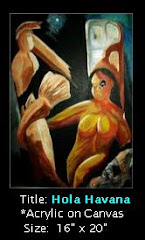Our fourth (and last, for now) excursion into Holmesian territory is a look at one of the early TV adaptations of the great detective that you can download or view on the Internet.
1954's Adventures of Sherlock Holmes, we owe to early television producer Sheldon Reynolds.
Reynolds had already seen some success with a series called `Foreign Intrigue' (aka Dateline Europe), which ran from 1951 to 1955. This was the first American TV show to be syndicated in Canada.
In 1954, Reynolds would produce 39 episodes of Sherlock Holmes starring Ronald Howard (Leslie Howard's son) as Sherlock Holmes, H. Marion-Crawford as Dr. Watson, and Archie Duncan as Inspector Lestrade.


Ronald Howard worked relatively steadily, mostly in anthology dramas, until the mid 1970's. A good actor, but he never really caught on with the public the way his father had, so in the mid 1970's he gave up acting and opened an art gallery.
Howard passed away in 1996. There is a website commemorating his work here.
H. Marion-Crawford (who passed away in 1969) continued to act up until his death, on shows such as The Saint, Danger Man, and Espionage. He also had small roles in Lawrence of Arabia and the Longest Day.
Archie Duncan, who incidentally plays several other characters in these episodes (sometimes fun to spot), would go on to play Little John in the Adventures of Robin Hood series. Duncan died in 1979, at the age of 65.
Howard and Marion-Crawford acquit themselves nicely in the roles, although many of the `mysteries' are fairly easy to solve.
Here then are 8 episodes of the 1954 series. Most are original stories, not from the cannon of works by Doyle, although a few were at least partially drawn from the author.
More may end up posted on the Internet Archive in the future. If so, I'll update the list in a later post.
![[movies]](https://lh3.googleusercontent.com/blogger_img_proxy/AEn0k_sc_zsqTFlMUy5x5HClGY84M-IX6yE27364wPK_bbDRSU1RzzwNWfi2Er9oXrtLmX4WrM3f0V2U0lD5flvlQK7z2orPMhLCi5F65pR_DEvRkgdJCb5c=s0-d)
Sherlock Holmes - The Case of the Pennsylvania Gun - Sheldon Reynolds
The New Adventures of Sherlock Holmes "The Case of the Pennsylvania Gun" Originally aired November 1, 1954. Based on the novel "The Valley of Fear," Holmes and Watson are called to Sussex to investigate the murder of Squire John Douglas. The local inspector thinks he has it all figured out, but Holmes discovers the crime is more complicated than it looks.
![[movies]](https://lh3.googleusercontent.com/blogger_img_proxy/AEn0k_sc_zsqTFlMUy5x5HClGY84M-IX6yE27364wPK_bbDRSU1RzzwNWfi2Er9oXrtLmX4WrM3f0V2U0lD5flvlQK7z2orPMhLCi5F65pR_DEvRkgdJCb5c=s0-d)
Sherlock Holmes - The Case of the Belligerent Ghost - Sheldon Reynolds
The New Adventures of Sherlock Holmes "The Case of the Belligerent Ghost" Originally aired November 15, 1954. Watson is quite flustered after a man in distress dies in his care...only to find himself attacked by the very same dead man on Watson's way back home to Baker Street! So what does this have to do with daVinci's "Madonna on the Rocks" painting allegedly being stolen?
![[movies]](https://lh3.googleusercontent.com/blogger_img_proxy/AEn0k_sc_zsqTFlMUy5x5HClGY84M-IX6yE27364wPK_bbDRSU1RzzwNWfi2Er9oXrtLmX4WrM3f0V2U0lD5flvlQK7z2orPMhLCi5F65pR_DEvRkgdJCb5c=s0-d)
Sherlock Holmes - The Case of the Shy Ballerina - Sheldon Reynolds
The New Adventures of Sherlock Holmes "The Case of the Shy Ballerina" Originally aired November 22, 1954. A simple case of mistakenly switched coats suddenly turns into blackmail and then murder! When poor Watson's hat was found at the scene of the crime, even he becomes a suspect. This episode features Natalie Schaffer, best known in her role later on in television history as Mrs. Lovey Howell in Gilligan's Island.
![[movies]](https://lh3.googleusercontent.com/blogger_img_proxy/AEn0k_sc_zsqTFlMUy5x5HClGY84M-IX6yE27364wPK_bbDRSU1RzzwNWfi2Er9oXrtLmX4WrM3f0V2U0lD5flvlQK7z2orPMhLCi5F65pR_DEvRkgdJCb5c=s0-d)
Sherlock Holmes - The Case of the Cunningham Heritage - Sheldon Reynolds
The New Adventures of Sherlock Holmes "The Case of the Cunningham Heritage" Originally aired October 18, 1954. Holmes unravels the mystery surrounding the death of Mr. Cunningham, a gentleman whose fiancée was found by his body with a knife in her hand. This television episode marks the first filmed meeting between Sherlock Holmes and Dr. Watson. Based on "A Study in Scarlet" and very loosely "The Adventure of the Reigate Squires/Puzzle."
![[movies]](https://lh3.googleusercontent.com/blogger_img_proxy/AEn0k_sc_zsqTFlMUy5x5HClGY84M-IX6yE27364wPK_bbDRSU1RzzwNWfi2Er9oXrtLmX4WrM3f0V2U0lD5flvlQK7z2orPMhLCi5F65pR_DEvRkgdJCb5c=s0-d)
Sherlock Holmes - The Case of Lady Beryl - Sheldon Reynolds
The New Adventures of Sherlock Holmes "The Case of Lady Beryl" Originally aired October 25, 1954. Lady Beryl admits to a crime she did not commit. Holmes not only reveals the true murderer, but Lady Beryl's motive for lying about the crime.
![[movies]](https://lh3.googleusercontent.com/blogger_img_proxy/AEn0k_sc_zsqTFlMUy5x5HClGY84M-IX6yE27364wPK_bbDRSU1RzzwNWfi2Er9oXrtLmX4WrM3f0V2U0lD5flvlQK7z2orPMhLCi5F65pR_DEvRkgdJCb5c=s0-d)
Sherlock Holmes - The Case of the Texas Cowgirl - Sheldon Reynolds
The New Adventures of Sherlock Holmes "The Case of the Texas Cowgirl" Originally aired November 8, 1954. Minnie O'Malley, a cowgirl in a travelling rodeo, seeks help from Sherlock Holmes--to remove a dead body from her hotel room! Strangely, Holmes seems to be more than happy to comply. Suspects range from a Blackfoot Indian, the owner of the rodeo Bison Jack, and a meek salesman across the hall. Easily the most ridiculous episode of the entire series.
![[movies]](https://lh3.googleusercontent.com/blogger_img_proxy/AEn0k_sc_zsqTFlMUy5x5HClGY84M-IX6yE27364wPK_bbDRSU1RzzwNWfi2Er9oXrtLmX4WrM3f0V2U0lD5flvlQK7z2orPMhLCi5F65pR_DEvRkgdJCb5c=s0-d)
Sherlock Holmes in The Case of the Laughing Mummy - Sheldon Reynolds
Part of the 1954 TV series. One of Dr. Watson's former schoolmates has an Egyptian mummy in his house that makes noise.
![[movies]](https://lh3.googleusercontent.com/blogger_img_proxy/AEn0k_sc_zsqTFlMUy5x5HClGY84M-IX6yE27364wPK_bbDRSU1RzzwNWfi2Er9oXrtLmX4WrM3f0V2U0lD5flvlQK7z2orPMhLCi5F65pR_DEvRkgdJCb5c=s0-d)
Sherlock Holmes in The Case of the Split Ticket - Sheldon Reynolds
Part of the 1954 TV series. An Irishman partners with two other persons to purchase a lottery ticket, but then is unable to collect his winnings.











